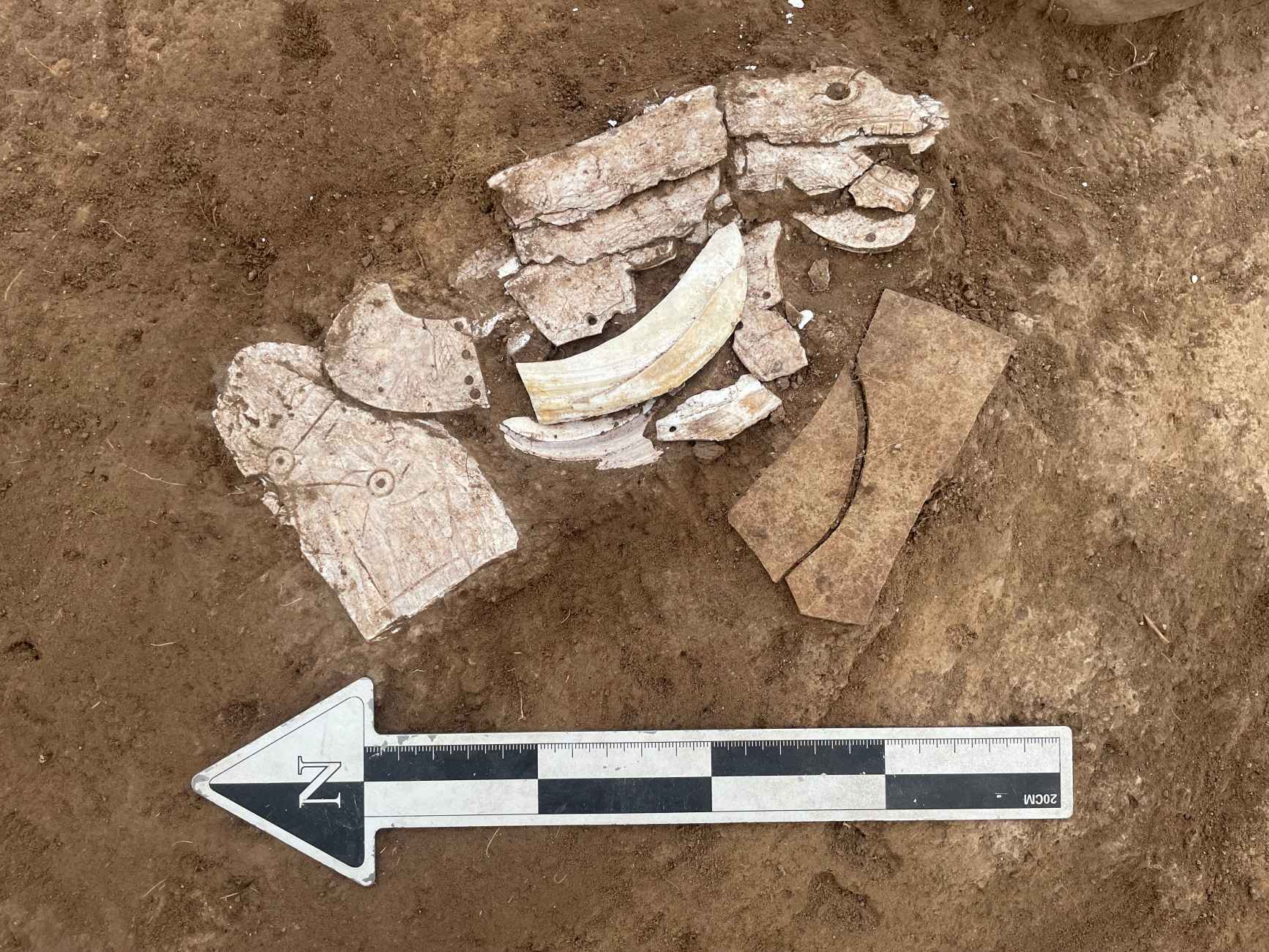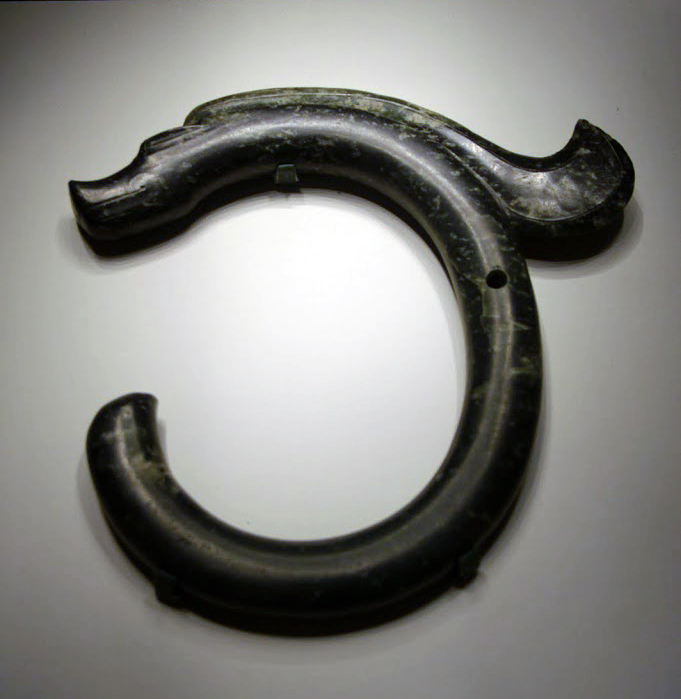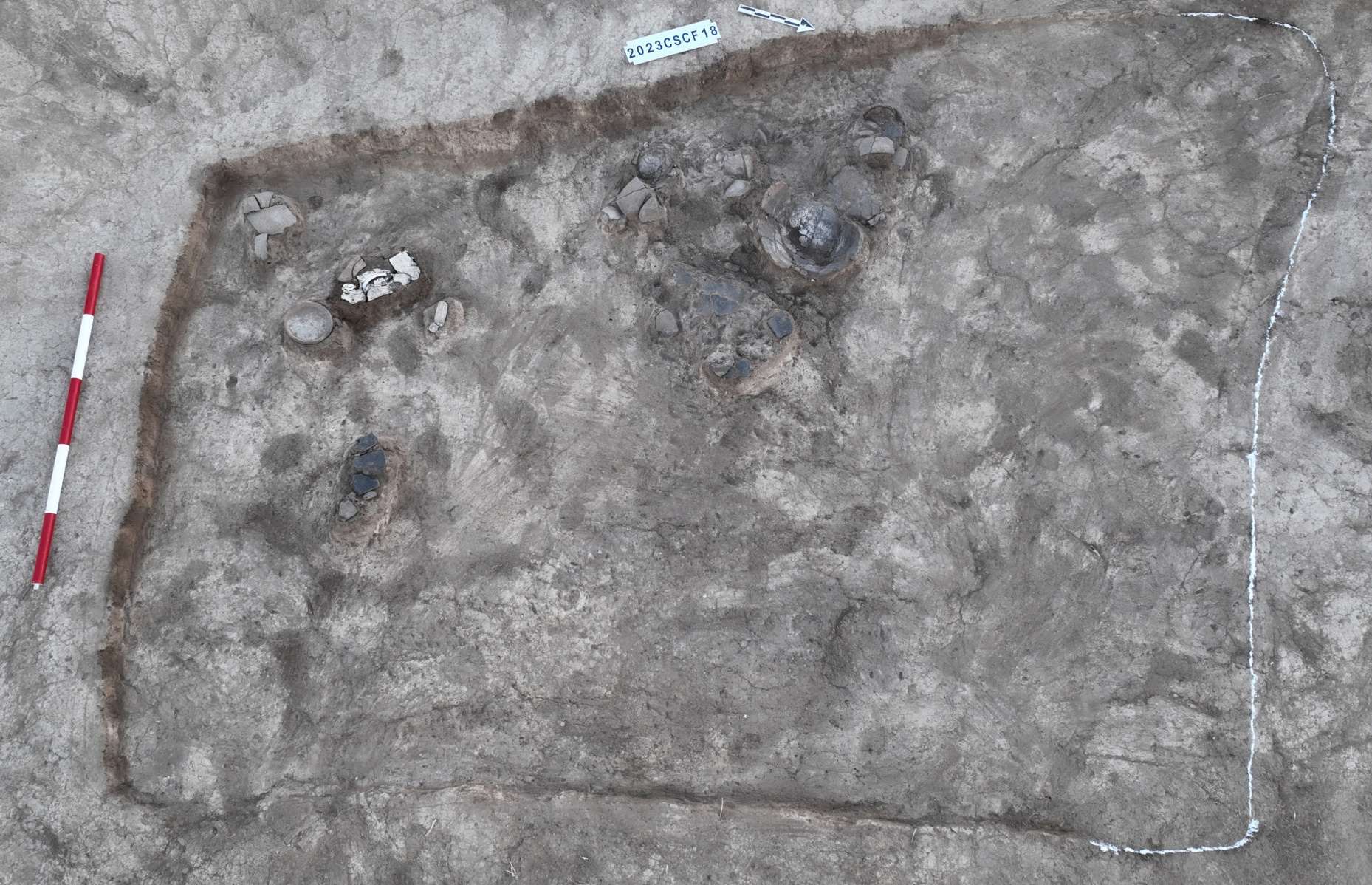Archaeologists in Chifeng, Inner Mongolia, have made a remarkable discovery that sheds new light on the ancient Chinese civilization. A dragon made entirely of mussel shells was unearthed, dating back to the Neolithic Hongshan Culture. This intricate artifact measures about 20 centimeters long and offers a glimpse into the artistic talents and cultural practices of the time.

The dragon, which is meticulously assembled from mussel shells, differs significantly from the previously found C-shaped jade dragon. The carving techniques and styling employed in its creation are more delicate and realistic. This suggests that the artisans of the Hongshan Culture had an advanced understanding of artistic expression and possessed keen attention to detail.

This discovery not only adds to our knowledge of ancient Chinese civilization but also highlights the cultural diversity and societal stratifications of the Hongshan Culture. It offers valuable insights into the way of life, beliefs, and rituals of this ancient society.
The Hongshan Culture flourished during the Neolithic era in Northeast China’s West Liao River Basin. The presence of Hongshan Culture sites in Inner Mongolia and Liaoning attests to the widespread reach of this civilization. The discovery of the mussel shell dragon further emphasizes the significance of this culture as a cornerstone of Chinese history.
The Hongshan Culture is known for its distinctive artistic style, characterized by intricate carvings and symbolic representations. Archaeological findings from Hongshan Culture sites have revealed a plethora of artifacts, including jade carvings, painted pottery, and stone tools.

The artistic prowess displayed in the mussel shell dragon suggests that art held a significant role in the Hongshan society. It is likely that these artistic expressions were not only admired for their aesthetic value but also served religious or ritual purposes. Understanding the underlying beliefs and rituals of the Hongshan Culture is crucial in uncovering the mysteries of this ancient civilization.
As an agricultural society, the Hongshan people relied heavily on farming for sustenance. They cultivated various crops, including millet and wheat, and also domesticated animals such as pigs and sheep. The availability of surplus food allowed for the development of a more complex social structure and the emergence of specialized craftsmen like those responsible for creating the mussel shell dragon.
The Hongshan Culture’s complex social structure is evident in the stratified burial practices discovered at the archaeological sites of Niuheliang, Hongshanhou and Weijiawopu, which could date back to 6,000 – 5,000 years ago. High-ranking individuals were buried in elaborate tombs adorned with valuable artifacts, such as jade ornaments and pottery. These burial practices indicate the existence of societal hierarchies during this time, with some individuals having greater access to resources and displaying higher social status.
Religion and spirituality played a significant role in the lives of the Hongshan people. Evidence of ritual sacrifices, worship of celestial deities, and the belief in the power of ancestral spirits have been unearthed at Hongshan Culture sites. The discovery of the mussel shell dragon adds to our understanding of the religious beliefs and rituals of this ancient civilization.



